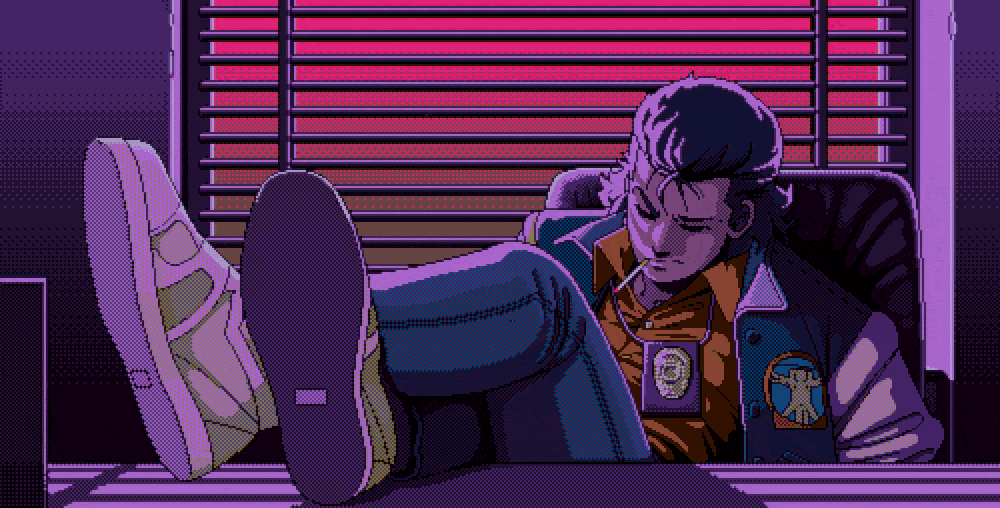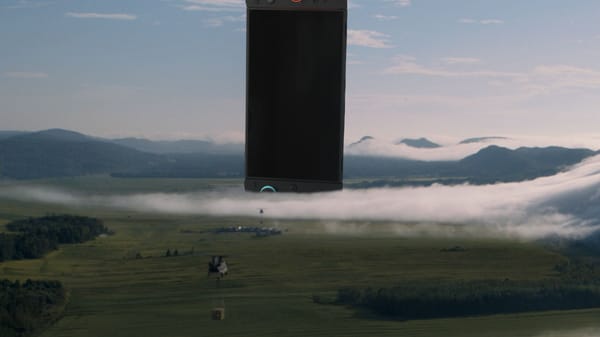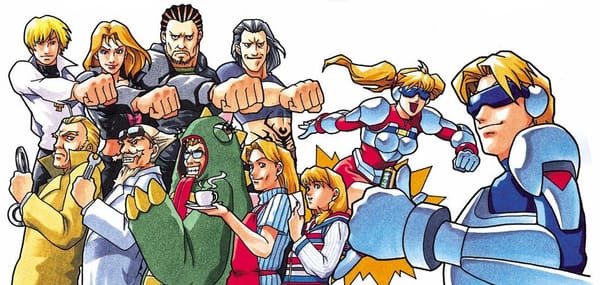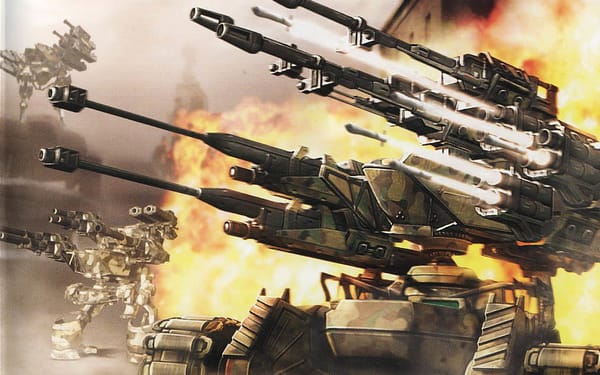Inside the 10 years it took to translate – and fully understand – one-of-a-kind RPG Linda Cube Again
It took 10 years to translate Linda³ Again, but almost 30 to peel back the mysticism of what this one-of-a-kind RPG is truly about.
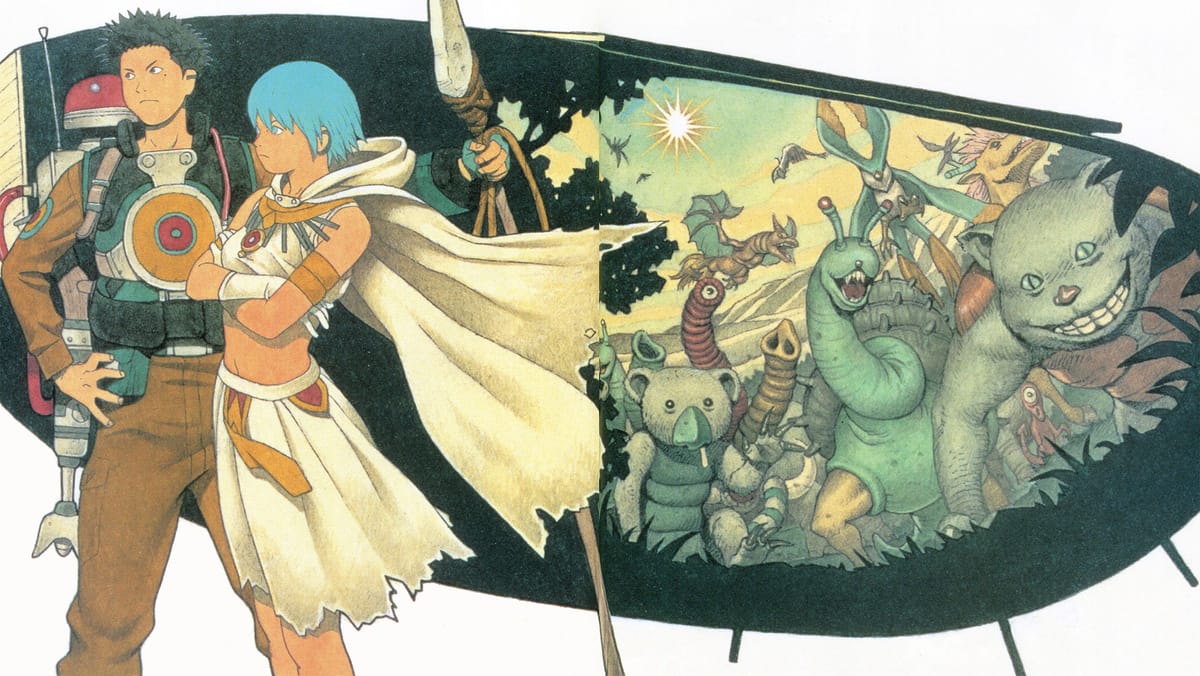
Hello hello hello! I'm going to keep the intro squat & saccharine as I've written a longer-than-normal main topic for this issue of ROM. I had the pleasure of chatting for an hour plus with the translator/hacker duo behind Linda Cube Again, a puzzle box of a horror-slapstick-survival-animal-taming-self-reflexive RPG built upon in-jokes and triple meanings. We talked about how it was possible to make an English patch for this game, which was no easy feat due to its odd construction — a PC-Engine CD RPG ported to the PlayStation, with snaking miles of strange code threading it together.
But we ended up talking just as much about the way long-coveted Japanese games can be built up in our collective gaming conscious, and what it's like to translate a game people have built up in their minds. Or more accurately, what it's like to translate the real thing, which is not the fantasy, and more nuanced than any entry in a list of the "most underrated PS1 RPGs" or "most bizarre games of all time." It's a bit different than the usual focus on emulation, here, but I hope you dig it.
And hey, if you don't, you've got a whole lot else to read about this issue, including a Sega "AI Computer" from the 1980s that I still barely believe is a real thing, and a healthy heaping of emulator updates and yet more translations. If you have a soft spot for LucasArts '90s PCs games — and I question your stone cold heart if you don't — make sure to check out the big update for DREAMM, which just hit 3.0. That's the quick dispatch for this week. Let's talk about Linda!
The Big Two
1. Linda³ Again: Behind the scenes with the fan translators of a truly one-of-a-kind RPG

Translator Cargodin and hacker EsperKnight have known each other a long time. Long enough that they've been working together on Linda Cube Again on and off for 10 years. At last it's out and available on Github (with some minor bugfixing still in the works). This 1995 JRPG for the PC Engine was ported to the PlayStation in 1997 as Linda Cube Again, and if you looked at certain screenshots of it you'd think it was a fairly ugly but typical 2D RPG from the era. But it's really not that. Or not just that.
I knew little about it, but one important bit of context is that Linda Cube was created by the Shoji Masuda, who also created Tengai Makyou, recently featured in ROM. Here's how my friend Baxter describes it:
"It is a game born from creative frustration intent on dismantling genre conventions and traditional gaming power fantasies; a structurally unique experience that is at turns purposefully frustrating, thematically cruel, and joyously contradictory."
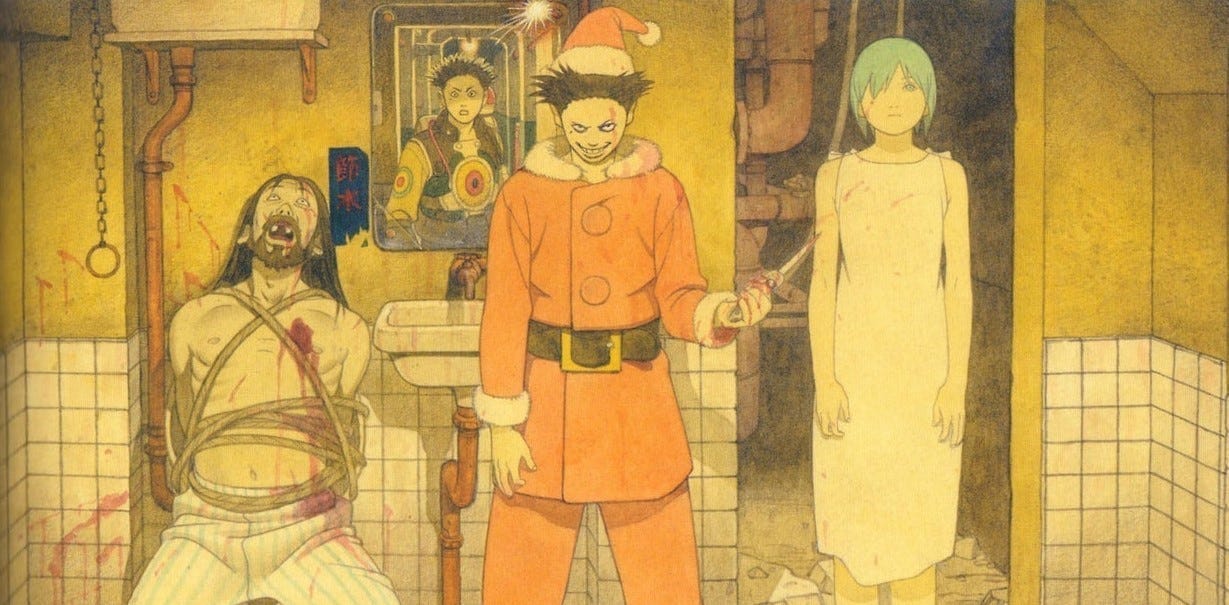
We're here to talk about the translation and its connection with emulation, but I think trying to answer what is Linda Cube? is directly relevant there, because in a way this translation changes the identity of this near 30-year-old game just by existing. That identity is intertwined with the age of the game, how English-speaking fans romanticize Japanese-only games (guilty), and how this translation coming out now instead of 20+ years ago presents an opportunity to change how people view Linda Cube as something other than a "weird game."
"I think that [the translation] does remove a lot of the mysticism of the game, because a lot of the mysticism is specifically about stuff that the game is not about," says Cargodin. "People think that the game is very funny and very wacky, and it's kind of not. It has a penchant for slapstick, but it really doesn't venture into the 'crazy,' 'insane' game that people say that it is... if you read my content warnings, it's more reason to not play the game than it is reasons to play the game, right? That's a thing you can say as a fan of the game when you're not doing this for money."
On the translation's Github page, Cargodin calls out things you should be aware of in Linda Cube. Violence against animals; dogfighting; body horror; domestic violence; sexual violence; politics. The more we talked about the game, the more I wondered how it would've been talked about by the gaming magazines and teenage RPG fans of the late '90s. I just couldn't imagine it going over well.
"I don't think the conversations about racism in the game and domestic violence and political stuff would have been taken seriously," says Cargodin. "I think that they would have been played for jest."
There's another element at play here, as there is around other translations of decades-coveted games — that mysticism, the way we build up scattered glimpses of a game into a patchwork picture of some grand work we yearn to experience.
If there's a true polar opposite of that experience, it's doing the actual work of translating a game, Cargodin says:
"You play a game very differently when you work on it and you see the script 30 times. When you're playing a game like this, there are things that you know you would miss because you would never run into it on your own, right? To really appreciate the script, you would have to play it two or three times per route and talk to everybody and be aware of what people are saying at different times, because in Linda, everyone is evacuating. So you start off with full features, full towns, all of the amenities that you need to get started, and then as you go out exploring and as time passes, that goes away. Sometimes the plot forces you to wait two seasons, or you only have three seasons to do something, because characters will leave. Certain areas will get destroyed.
"I don't think that I would have experienced this game the same way if I was playing it for the first time... I'm not a game completionist that way, but I think that you kind of have to be to really appreciate even the base plot of what happens in scenario A, scenario B, scenario C. They are parallel, but they're also not."
Here's where that philosophical ruminating leads to me — not only is Linda Cube a fascinating game, it's a fascinatingly made one, with the structure of its remixed scenarios giving us an opportunity to learn a bit about how RPGs of the era were programmed and how folks like Cargodin and EsperKnight translate them.
"When I extracted the text, it was like 7 megs of text — that is the largest I've ever seen," says EsperKnight. Because Linda is set over a number of years, the same areas are duplicated to many many map files in the game, and then the text relevant to those map files — say, NPCs who stick around — are duplicated across all of them. "Once I removed all that duplication, it went down to a meg, which is still a lot. But it was quite interesting to see how much duplication they had."
Cargodin translates in Notepad++ (truly one of the greatest pieces of free software ever made), and its powerful search tools let her search for any bit of text in the game — say a character's name or an NPC's line of dialogue — no matter what map file it appears in. That's important for Linda, because across the three scenarios the same line of text could mean wildly different things.
"Linda Cube is built on inside jokes," says Cargodin. "You might see a line that one character says in Scenario A and it's taken dead serious, and then it's used in Scenario C as a joke."
To make the translation process easier, EsperKnight wrote a tool that takes their English script, which is a single file, and then merges it into each of those individual map files, re-duplicating the English text into its correct places. He also had to insert a variable-width font to fit more English text on-screen. In the video above you may think the text looks oddly small in the box it sits in; there's a reason for that. There are a couple moments where you have to make a choice in the game that present tons of options — "a lady asks you what fruits do you like, and she lists off like, 12 fruits," says Esper — and if they don't all fit in the one text box, it all ends up freezing.
The biggest challenge was adding subtitles to the game where there was no Japanese at all. Linda Cube features some voiced dialogue with no text on screen. Esper would have to inject his own code to do something the game wasn't built to do, and that presents two problems — figuring out how to make the text appear, and figuring out how to fit his new code into memory without crashing the game.
"That probably took me at least a month to figure out," he says. "When I hack on games, I do not try to figure out how the game works. For me, the ideal situation is I figure out what I need, I get in, I get out, like a doctor." But that wasn't going to work here. He had to dig and dig until he understood the entirety of Linda's graphics system.
"Each individual graphic has its own ID, and then from there it has a mapping of the tiles that are being displayed... I also had to find how it layers the graphics on top of each other, so that I could set my subtitles to the highest layer. Their graphic subsystem doesn't use any of the PlayStation library stuff. They hand-rolled their own stuff. We have tools that ID the functions that the PlayStation BIOS uses. But Linda doesn't use them."
In Linda's case, finding enough room in memory to load the patch's font and other changes was just a matter of trial and error. EsperKnight would play a bit of the game and then use tools to capture and study a dump of everything in RAM, and look for spots that seemed empty. That's where he's load his code — and then play more to see if the game ever stuck anything in the same place.
EsperKnight is still tracking down some straggler bugs. Despite completing the game on an emulator, some people have reported that it breaks on consoles. He thinks something in his patch has triggered the game's copy protection. "I broke the checksum and it worked fine — probably because the emulator is fudging some stuff. But the PlayStation of course is going to do exactly what it's going to do. And apparently for one specific battle halfway through Scenario A, it breaks."
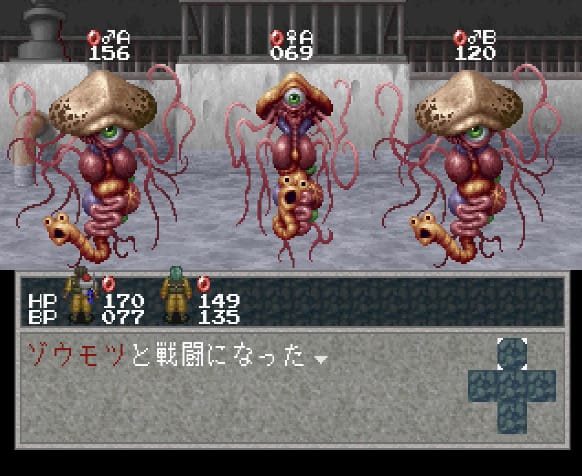
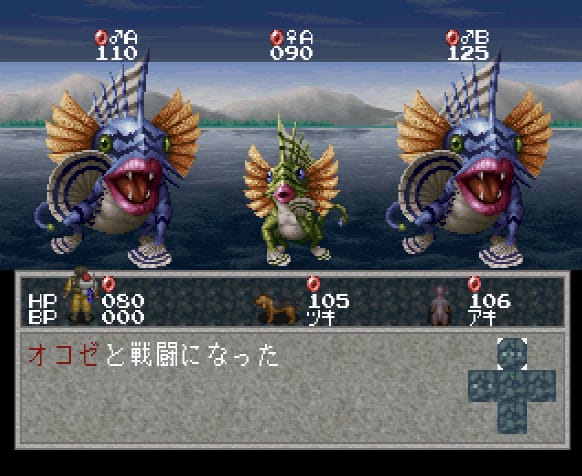
Battles in Linda³ Again, via Ivantod on LPArchive.org
While it was a big job to translate and a difficult game to hack, neither of those things are why this project took 10 years to reach completion. There was no near-impossible challenge here — Cargodin and EsperKnight are simply active members of the translation scene, and regularly help others on projects that they know can be finished in far less time than it was going to take to be done with Linda. They'd bounce here or there for a few months, and those months added up to years. Ultimately that spirit seems fitting for Linda Cube, a game that tasks you with helping the creatures of a doomed planet. On the Github where you can download the patch, Cargodin echoed that theme.
"Be a Ken or a Linda. If you stand to benefit at all from this patch release via journalism or streams, etc., use that platform to help others," she wrote.
So I'd like to highlight one of the causes Cargodin mentioned in particular: an upcoming Palestinian Relief Bundle on Itch.io, with proceeds going to the Palestine Children's Relief fund. Please donate to it if you can.
2. Sega made an AI Computer? In 1986? And it's kinda emulated now? Well, huh!

This is likely the only pairing of the words "AI" and "computer" you'll read this month tat won't make you want to claw your eyes out. I did not know that Sega made an "AI Computer" back in the '80s, and I imagine there are plenty of devout Sega fans who've never heard of this thing, either. It was only released in Japan and seemingly more geared towards kids and educational uses. Basically not the kind of device that most gamers would go out of their way to emulate or preserve.
But the devotees at SMS Power have done just that, going out of their way to buy an AI Computer at auction, dump its games, collect tons of information and even dump some games.
"Today we are making public, for the first time: all system roms extracted from the Sega AI Computer, data dumps from 26 my-cards and 14 tapes, many scans and photographs, and in collaboration with MAME developers, an early working MAME driver allowing this computer to be emulated," the team wrote on January 31.
Sega really was hyping up the "AI" aspect of this thing back in the day, with the supposed ability to do some natural language processing; a 1986 article about the machine described diary software that would let children say a few words about their day, and then the machine would write them "a grammatically correct diary entry." (Seems like our ideas for stuff like ChatGPT haven't changed much in almost 40 years, even if the tech at the time was vastly more rudimentary.) More interesting is the hardware: it used a touch surface with swappable overlays to customize inputs for different software. And most interesting is the font they used for the AI Computer's branding:
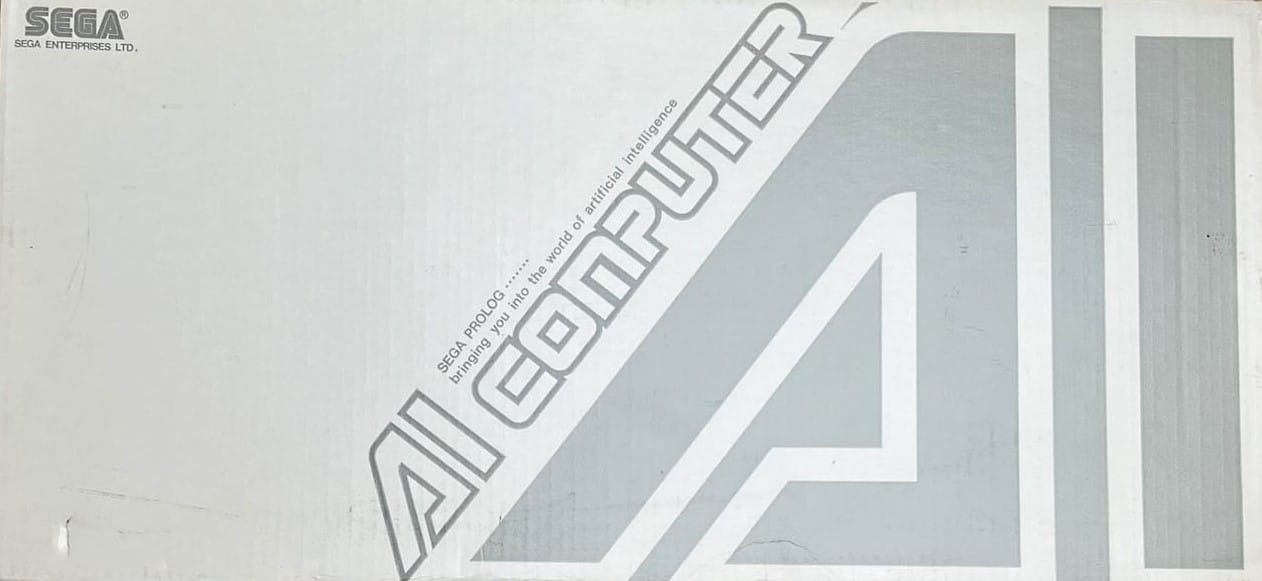
Absolutely peak '80s futurism here.
SMS Power has managed to preserve 26 software roms so far as well as a number of cassettes, but those aren't emulated yet. Work on a MAME driver for the roms started way back in 2015, apparently, but with more software and hardware in-hand more recently, it's finally seen some progress. The AI Computer is in MAME, currently listed as 'not working' as it isn't feature-complete. But it's far enough along now that people can actually mess around with the software, and SMS Power's incredible work documenting the system should help raise awareness and spur along further emulation progress.
Patching In

⌨ Dolphin fixes a decade-old profile bug – I got a kick out of this note from veteran Dolphin contributor JosJuice, who notes the input code has long included both "GetProfileName" and "GetProfileDirectoryName" and things have been getting mixed up. "As far as I can tell, the existing code has been broken for GC keyboards since they were introduced a decade ago," JosJuice writes. "The GUI (and more recently, also InputCycler) would write and read profiles in one location, and our code for loading profiles specified in a game INI file would read profiles in another location." Fixed for all your GameCube keytroller owners out there.
🏌️♀️ A smattering of PSCX2 patches – I always get a kick out of the game-specific fixes for PCSX2. The last few weeks include:
- Grass looking "less sharp and more like grass" in Hot Shots Golf Fore
- In Shadow Hearts "transitions for fights no longer flicker, opening the menu doesn't cover the screen in garbage, and special effects for Fusion moves work correctly"
- Zathura, Bionicle, Scarface, Spider-Man 2, Bully, SpongeBob SquarePants: Battle for Bikini Bottom, and Hot Wheels: World Race get PS2 trilinear+Full mipmap enabled by default
- Intro desync fixed in Need For Speed: Hot Pursuit 2
- Samurai Warriors 2 - Xtreme Legends AI smartening up
- Improved "notoriously inaccurate water in Just Cause" with proper translucency and surface texture
👾 Retroarch 1.17.0's changelog is looong – There's a new version of Retroarch! Things are improved? I'm not a Retroarch user, but there are lots of little improvements here if you are. Also, it supports Belarusian now. Your time has come, Belarus emulation fans!
👯♂️ Yuzu multiplayer gets a little nicer – Some nice QOL features for Yuzu multiplayer include a bunch of hotkeys, saving filters and color-coded player counts for full/almost full/lonely lobbies.
😴 DREAMM 3.0b1 supports piles of new Lucas games – Longtime MAME leader Aaron Giles has been working on an emulator purpose-built for old LucasArts games for a couple years now, and this beta release dropped on Friday with tons of updates. He now supports 13 more games including the unreleased prototype for Super Star Wars. Also supported: expansion packs and new CRT filters. I have to imagine DREAMM is now the best way to play most or all of the games it supports, at this point.
Core Report

🔥 N64 MiSTer core keeps squashing bugs – Programmer Robert Peip regularly tweets updates to the N64 cores as he discovers little edge cases that have to be accounted for. Here's a couple cool ones:
Fixed the flame rendering in Paper Mario on the #MiSTerFPGA N64 core.
— FPGAzumSpass (@AzumFpg) January 31, 2024
Flames depend on 2 very rarely used RDP features:
- 8 bit framebuffers reading back pixels as grayscale, creating the shape of the flame
- color combiner overflowing into negative. This creates the glow effect pic.twitter.com/XYJQA9LP8t
More render bugs fixed in the #MiSTerFPGA N64 core.
— FPGAzumSpass (@AzumFpg) February 2, 2024
Today: Tonic Trouble backgrounds are no longer looking like shipping containers. pic.twitter.com/YfRWjECgjq
💿 MAME .262 gets Dragon's Lair – The latest MAME release includes the usual wide range of additions, but neatest may be support for 3 new LaserDisc games: "the Japanese version of Time Traveler, the console-to-arcade conversion Thayer’s Quest, and Don Bluth’s Dragon’s Lair." "It’s very exciting to see multiple LaserDisc captures combined to eliminate all dropouts from disc degradation and pressing faults for Dragon’s Lair and Thayer’s Quest," notes the MAME team. For perhaps one person on Earth, it may be bigger news that MAME now supports Saitek's Electronic Champion Backgammon. I should tell my dad...
📸 Yeah, the MiSTer works with the actual Game Boy Printer – I cannot say that the thought "could I emulate the Game Boy on a MiSTer and then hook up a link cable with an adapter to the real Game Boy Printer and print out a picture of Donkey Kong?" ever entered my head until today. But anyway, yeah, you can totes do that. Neat imo. (Also, big ups for the username "WaluigisRevenge2018").
MiSTer printing on a real GameBoy Printer!
byu/WaluigisRevenge2018 infpgagaming
Translation Station

👿 Majyūō: King of Demons, cart and all – Now this is the kind of thing I want to see more often! Not a fan translation – a real deal licensed localization, bringing a Super Famicom game to the west for the first time ever. Here's a trailer from Retro-Bit:
I gotta say the upscaling quality there is pretty gnarly – someone needs to get these guys a Retrotink 4K. But a cartridge release gets an enthusiastic 'hell yea' from me and this is far from Retro-bit's first release like this, so I expect it'll be quality. HG101 says the game "is most often described as 'Castlevania with a gun,'" but you can transform into different types of demons, the backgrounds are "completely outstanding" and there's some real horror ambiance here compared to Castlevania. There's a 19-year-old fan translation for this one by Aeon Genesis that I'm very curious to compare against to see what, if anything, was done differently here.
🤜 Melfland Stories sidescrolls its way into English – Translator and hacker Gan has released their first project on RHDN, a fantasy brawler with some cute art. Also for the SFC! Gan notes that they kept the original font and and translated the text to fit the limited screen space afforded to text, so it may be a bit brusque. Then again, I doubt it was quite as wordy as Final Fantasy.
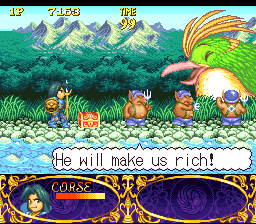
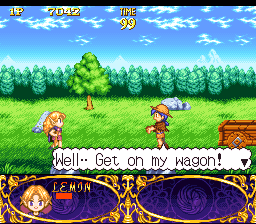
🐱👤Samurai Shodown RPG translation updated – Featured a couple months ago, the translation of the Neo-Geo CD game has now been updated with options to tweak damage scaling and encounter rate, and lots of little bug fixes and formatting tweaks. If you were holding off playing it, now it's better!
Good pixels

This issue really belongs to Linda, so I figured a few comparisons of the PC-Engine original and Linda³ Again for PS1 would be a fun way to close it out.
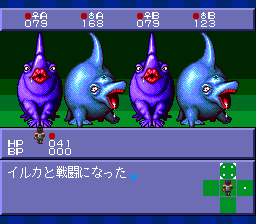
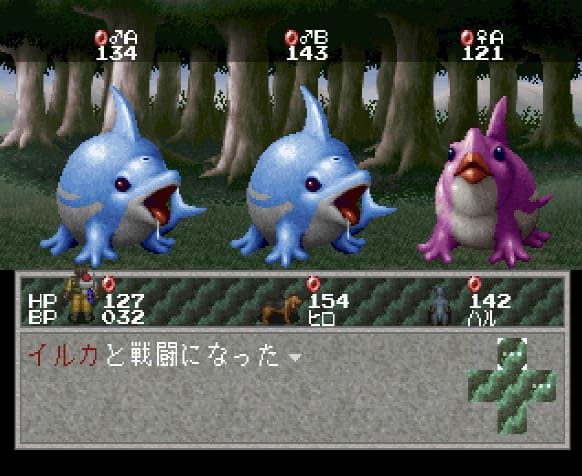
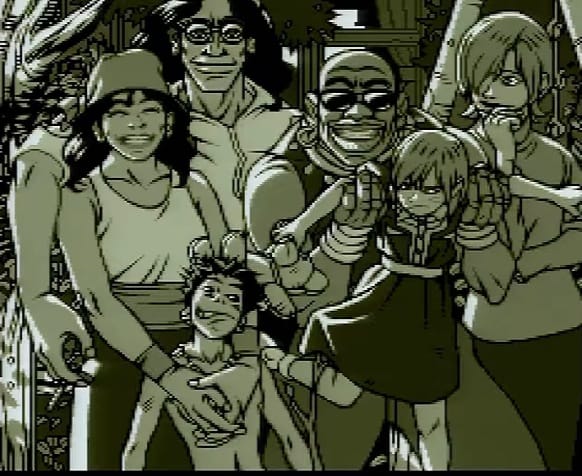
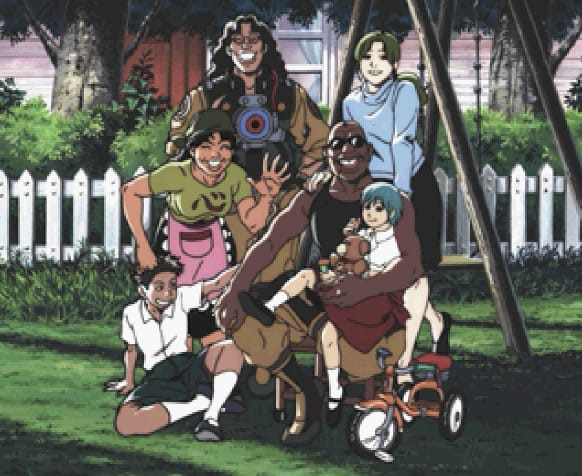
Left/first: Linda³, PC-Engine. Right/second: Linda³ Again, PS1. (Images via Ivantod on LPArchive.org)
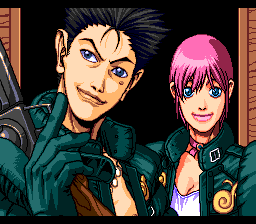
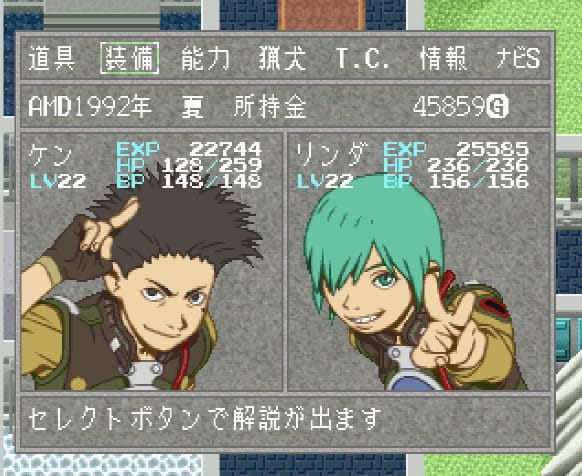
Images via Mobygames, LPArchive.org
See y'all on the Ark.

